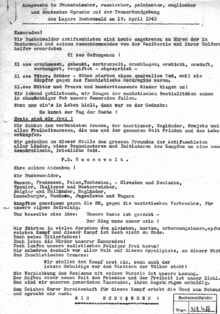
Buchenwald was a Nazi concentration camp established on Ettersberg hill near Weimar, Germany, in July 1937. It was one of the first and the largest of the concentration camps within Germany's 1937 borders. Many actual or suspected communists were among the first internees.

Nazi concentration camp badges, primarily triangles, were part of the system of identification in German camps. They were used in the concentration camps in the German-occupied countries to identify the reason the prisoners had been placed there. The triangles were made of fabric and were sewn on jackets and trousers of the prisoners. These mandatory badges of shame had specific meanings indicated by their colour and shape. Such emblems helped guards assign tasks to the detainees. For example, a guard at a glance could see if someone was a convicted criminal and thus likely of a tough temperament suitable for kapo duty.
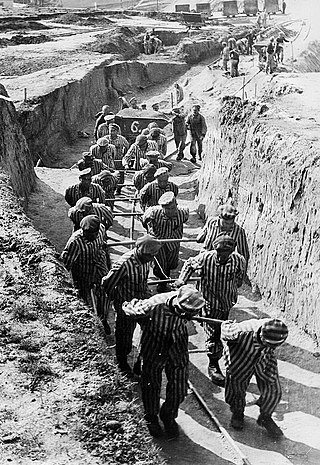
From 1933 to 1945, Nazi Germany operated more than a thousand concentration camps, including subcamps on its own territory and in parts of German-occupied Europe.
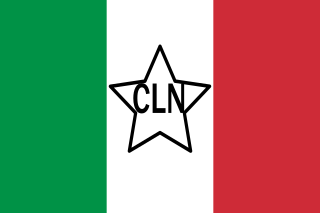
The Italian resistance movement is an umbrella term for the Italian resistance groups who fought the occupying forces of Nazi Germany and the fascist collaborationists of the Italian Social Republic during the Second World War in Italy from 1943 to 1945. As a diverse anti-fascist movement and organisation, the Resistenza opposed Nazi Germany, as well as Nazi Germany's Italian puppet state regime, the Italian Social Republic, which the Germans created following the Nazi German invasion and military occupation of Italy by the Wehrmacht and the Waffen-SS from 8 September 1943 until 25 April 1945.

Sachsenhausen or Sachsenhausen-Oranienburg was a German Nazi concentration camp in Oranienburg, Germany, used from 1936 until April 1945, shortly before the defeat of Nazi Germany in May later that year. It mainly held political prisoners throughout World War II. Prominent prisoners included Joseph Stalin's oldest son, Yakov Dzhugashvili; assassin Herschel Grynszpan; Paul Reynaud, the penultimate prime minister of the French Third Republic; Francisco Largo Caballero, prime minister of the Second Spanish Republic during the Spanish Civil War; the wife and children of the crown prince of Bavaria; Ukrainian nationalist leader Stepan Bandera; and several enemy soldiers and political dissidents.
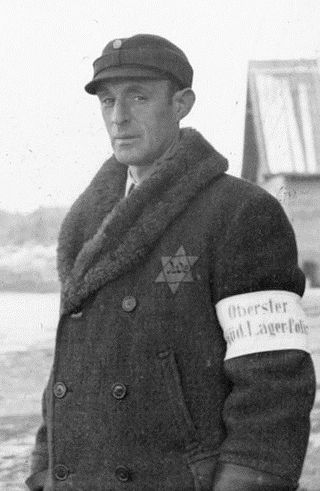
A kapo or prisoner functionary was a prisoner in a Nazi camp who was assigned by the Schutzstaffel (SS) guards to supervise forced labor or carry out administrative tasks.
Emil Carlebach was a German Landtag member, writer and journalist. He was born and died in Frankfurt am Main.

Identification of inmates in Nazi concentration camps was performed mostly with identification numbers marked on clothing, or later, tattooed on the skin. More specialized identification in Nazi concentration camps was done with badges on clothing and armbands.

Naked Among Wolves is a 1963 East German film directed by Frank Beyer and starring Erwin Geschonneck and Armin Mueller-Stahl. The film is based on author Bruno Apitz's 1958 novel by the same name. The film was remade in 2015 under the direction of Philipp Kadelbach.

The Association of Persecutees of the Nazi Regime – Federation of Antifascists (VVN-BdA) is a German political confederation founded in 1947 and based in Berlin. The VVN-BdA, formerly the VVN, emerged from victims' associations in Germany founded by political opponents to Nazism after the Second World War and the end of the Nazi rule in Germany.
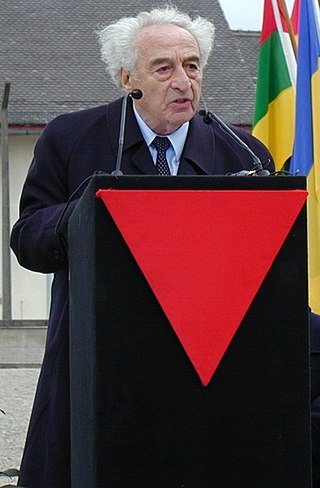
International concentration camp committees are organizations composed of former inmates of the various Nazi concentration camps, formed at various times, primarily after the Second World War. Although most survivors have since died and those who are still alive are generally octogenarians, the committees are still active.
Harry Naujoks was a German anti-fascist and communist and survivor of Sachsenhausen concentration camp.
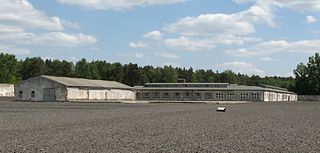
Ravensbrück was a Nazi concentration camp exclusively for women from 1939 to 1945, located in northern Germany, 90 km (56 mi) north of Berlin at a site near the village of Ravensbrück. The camp memorial's estimated figure of 132,000 women who were in the camp during the war includes about 48,500 from Poland, 28,000 from the Soviet Union, almost 24,000 from Germany and Austria, nearly 8,000 from France, and thousands from other countries including a few from the United Kingdom and the United States. More than 20,000 of the total were Jewish. Eighty-five percent were from other races and cultures. More than 80 percent were political prisoners. Many prisoners were employed as slave labor by Siemens & Halske. From 1942 to 1945, the Nazis undertook medical experiments on Ravensbrück prisoners to test the effectiveness of sulfonamides.

Subcamps, officially Arbeitslager der Waffen-SS, were outlying detention centres (Haftstätten) that came under the command of a main concentration camps run by the SS in Nazi Germany and German-occupied Europe. The Nazis distinguished between the main camps and the subcamps subordinated to them. Survival conditions in the subcamps were, in many cases, poorer for the prisoners than those in the main camps.

Anti-fascism is a political movement in opposition to fascist ideologies, groups and individuals. Beginning in European countries in the 1920s, it was at its most significant shortly before and during World War II, where the Axis powers were opposed by many countries forming the Allies of World War II and dozens of resistance movements worldwide. Anti-fascism has been an element of movements across the political spectrum and holding many different political positions such as anarchism, communism, pacifism, republicanism, social democracy, socialism and syndicalism as well as centrist, conservative, liberal and nationalist viewpoints.

Walter Bartel was a German communist resistance fighter, historian and university professor.
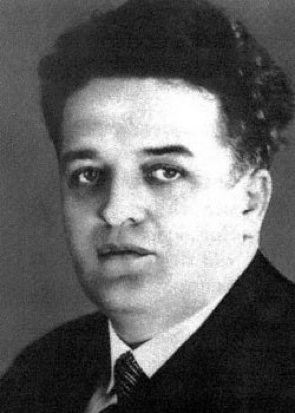
Walter Kraemer (Krämer) was a German politician of the German Communist Party (KPD) and member of the resistance against Nazism. From 1932/33, he was a deputy of the Prussian Landtag, was arrested in 1933 and murdered in 1941 in a sub-camp of the concentration camp Buchenwald in Goslar. He assisted prisoners with getting medical help, becoming known as the "Doctor of Buchenwald", for which he received from the State of Israel the posthumous title "Righteous among the Nations" in 2000.

Akbar Sattar oglu Aghayev, was a Soviet-Azerbaijani servicemen, lieutenant of the Red Army, and one of the leaders of the anti-fascist resistance in the Buchenwald concentration camp.
Albert Kuntz was a German goldsmith, soldier, communist and concentration camp victim. A soldier in the First World War, Kuntz rose to become an elected representative of the German Communist Party in Berlin's Prussian Landtag. In 1933 he was arrested by the Gestapo, and sent to a succession of prisons and concentration camps. He died in January 1945 at the Mittelbau-Dora concentration camp, where he had been organizing the sabotage of the V-2 rocket production line. Following his death, he was revered as an anti-fascist hero in East Germany.

Hamelin Prison, also known as the Stockhof, was a prison and penitentiary in Hamelin. The penal institution, which had a predecessor since 1698, existed from 1827 to 1980. It was located between the old town and the river Weser. The listed prison buildings are now used as a hotel.




